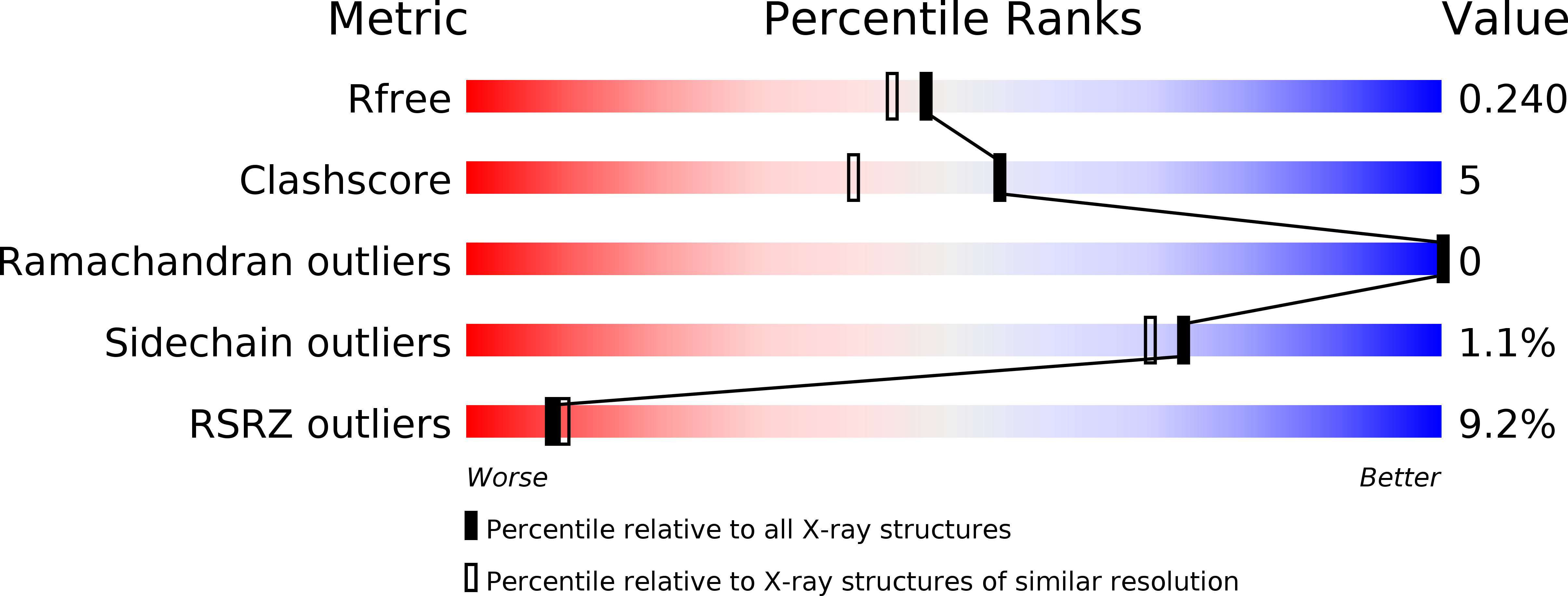
Deposition Date
2019-03-18
Release Date
2019-09-18
Last Version Date
2024-11-06
Entry Detail
PDB ID:
6OAP
Keywords:
Title:
Crystal structure of a dual sensor histidine kinase in the green-light absorbing Pg state
Biological Source:
Source Organism:
[Leptolyngbya] sp. JSC-1 (Taxon ID: 1487953)
Host Organism:
Method Details:
Experimental Method:
Resolution:
1.97 Å
R-Value Free:
0.23
R-Value Work:
0.18
R-Value Observed:
0.18
Space Group:
P 43 21 2


